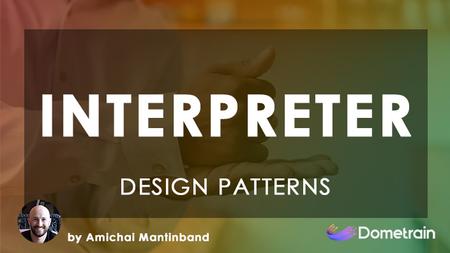English | MP4 | AVC 1920×1080 | AAC 44KHz 2ch | 14 Lessons (0h 56m) | 182 MB
Learn everything there is to know about the Interpreter Design Pattern
The Interpreter Design Pattern is a significant design pattern in software engineering, used to define a grammar for a language and interpret statements within it. This pattern is essential for developers working with languages, as it enables the parsing and evaluation of expressions or instructions efficiently. The Interpreter pattern is particularly useful in applications like compilers, expression evaluators, or systems with scripting capabilities where commands or expressions need to be processed dynamically. In this course, Amichai Mantinband will guide you through everything you need to understand and implement the Interpreter pattern, enabling you to build flexible, extensible, and maintainable applications that can handle complex instructions and expressions.
Table of Contents
1 Course Overview
2 Definition
3 Class Diagram
4 Math Language Example
5 What’s Not Part of the Interpreter Design Pattern
6 Search Query Language Example
7 Search Query Language Class Diagram
8 Section Recap
9 Implementing the Interpreter Design Pattern
10 Implementing the Search Query Language Example
11 Section Recap (2)
12 Benefits
13 Drawbacks
14 Conclusion
Resolve the captcha to access the links!
